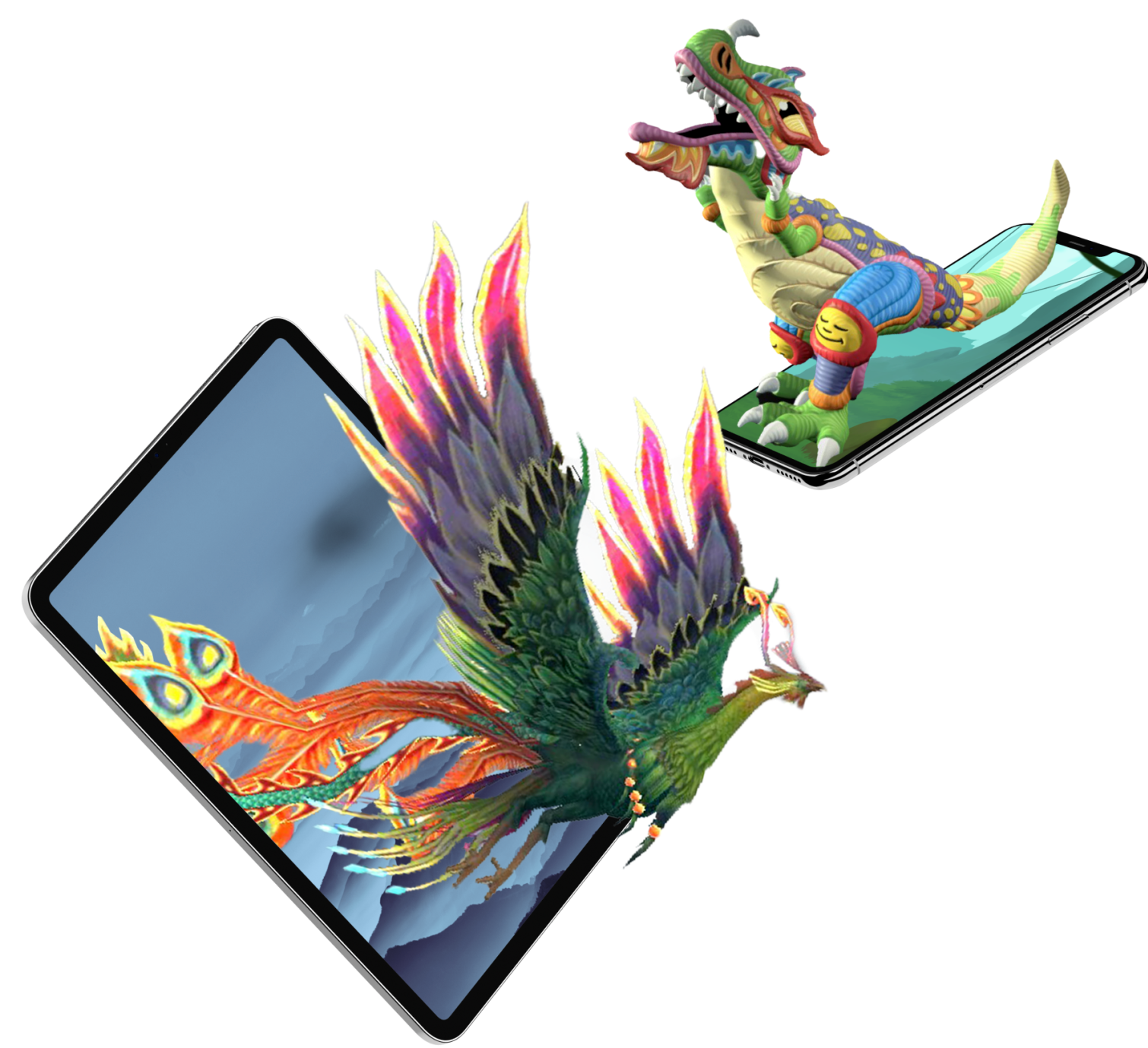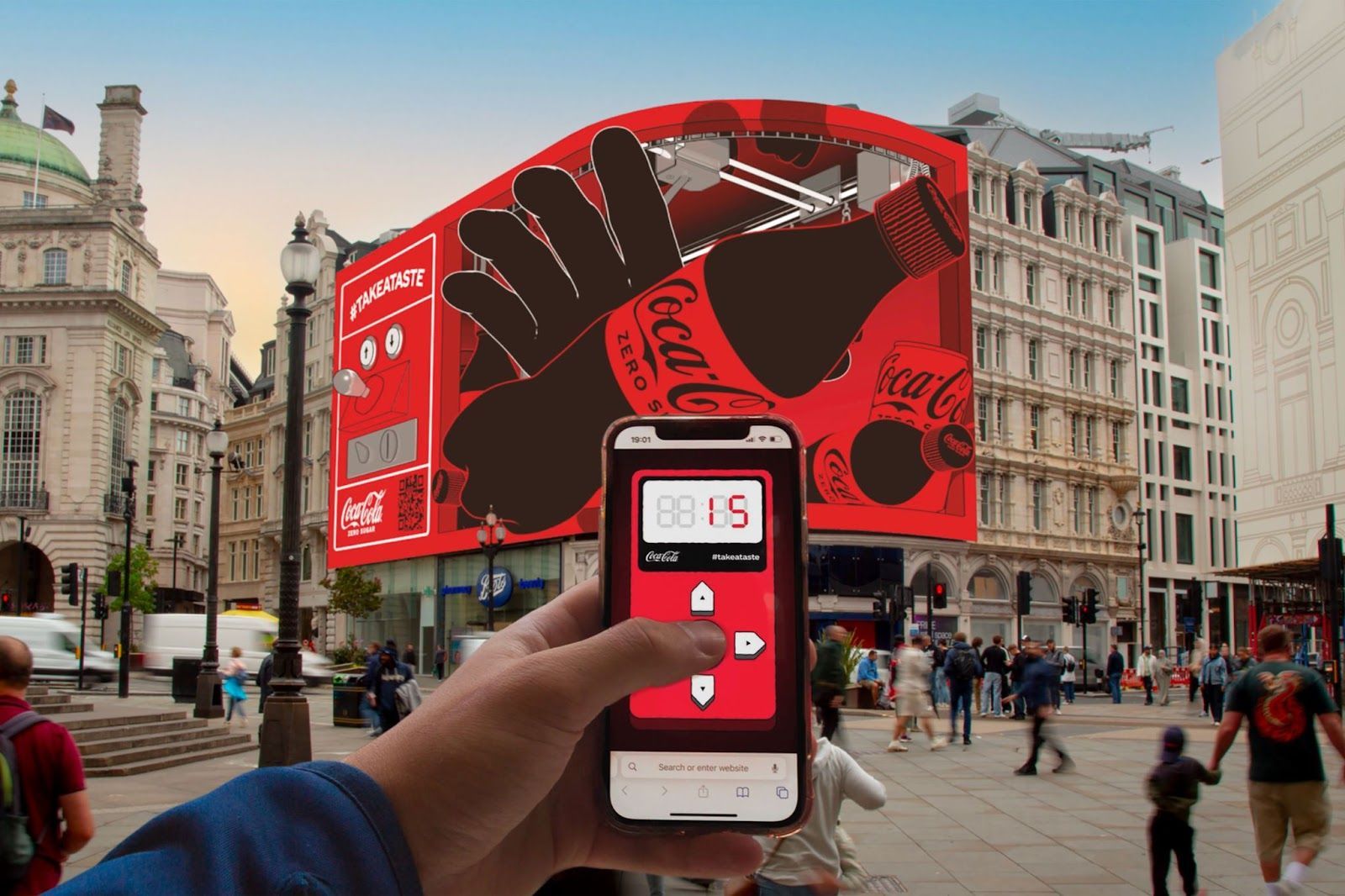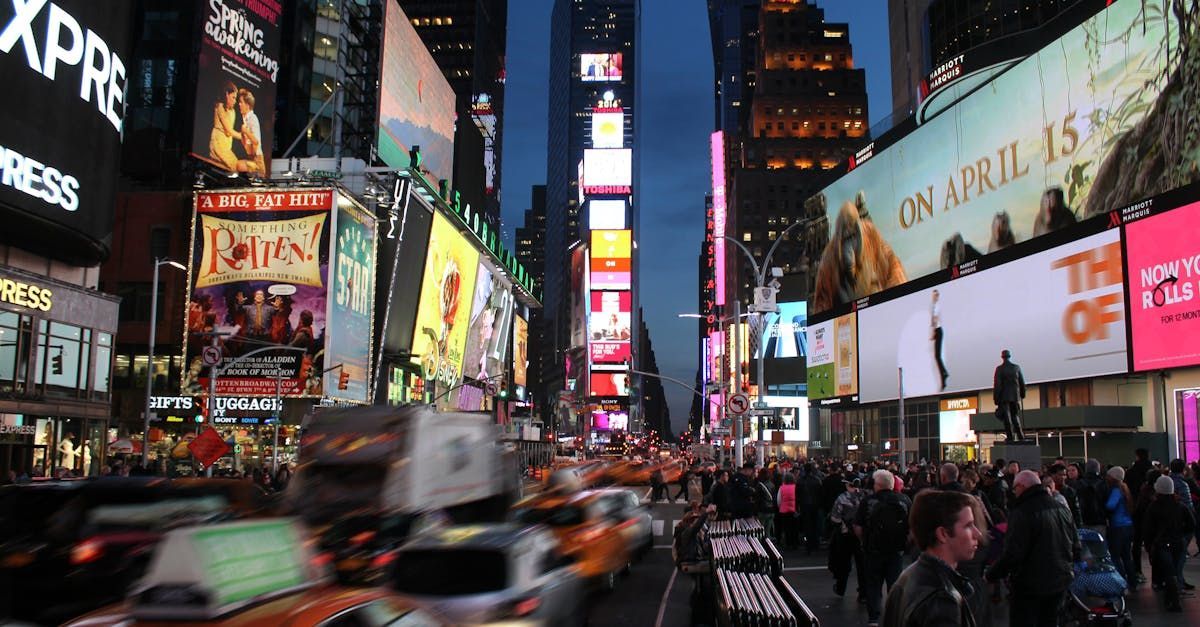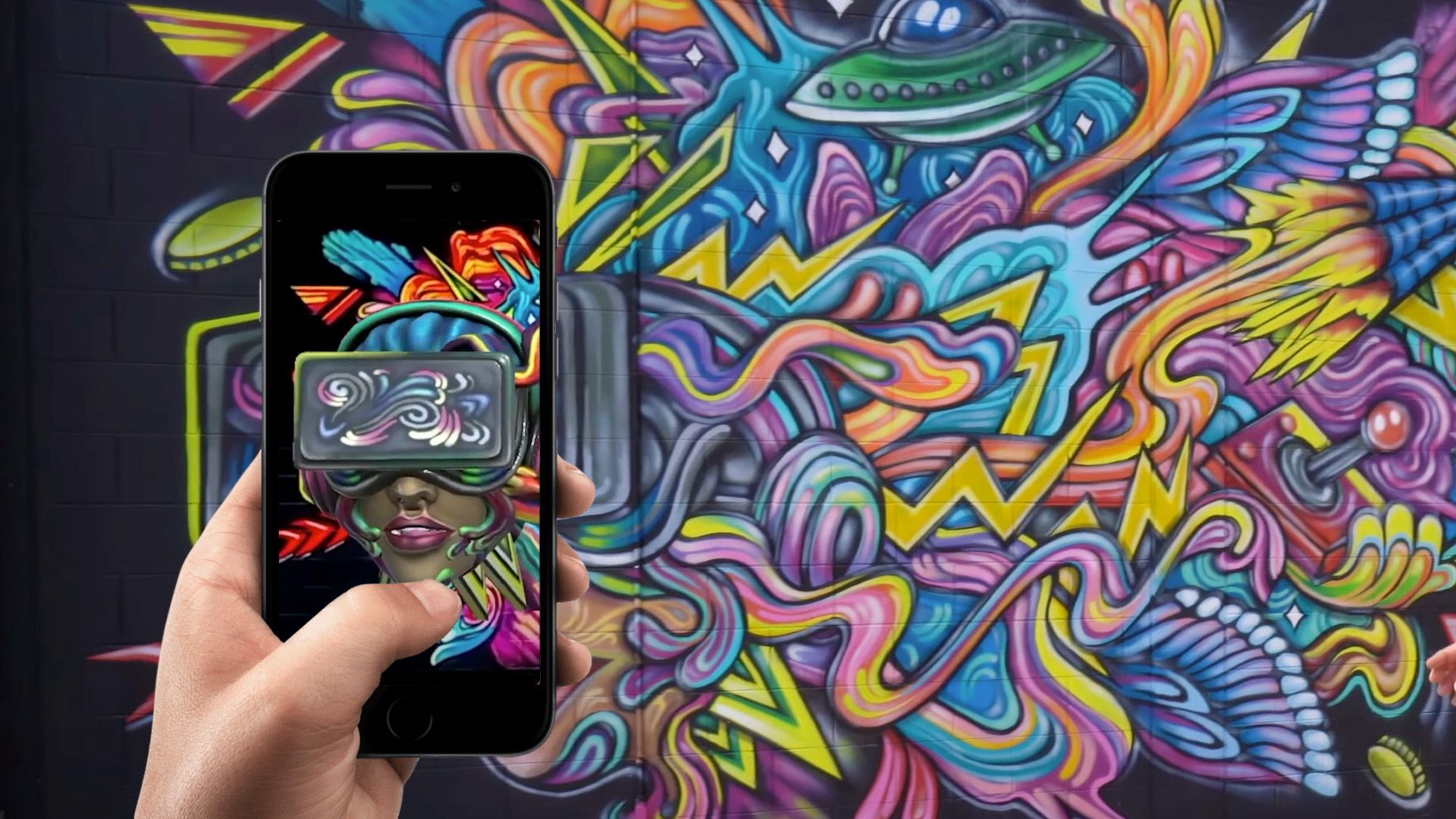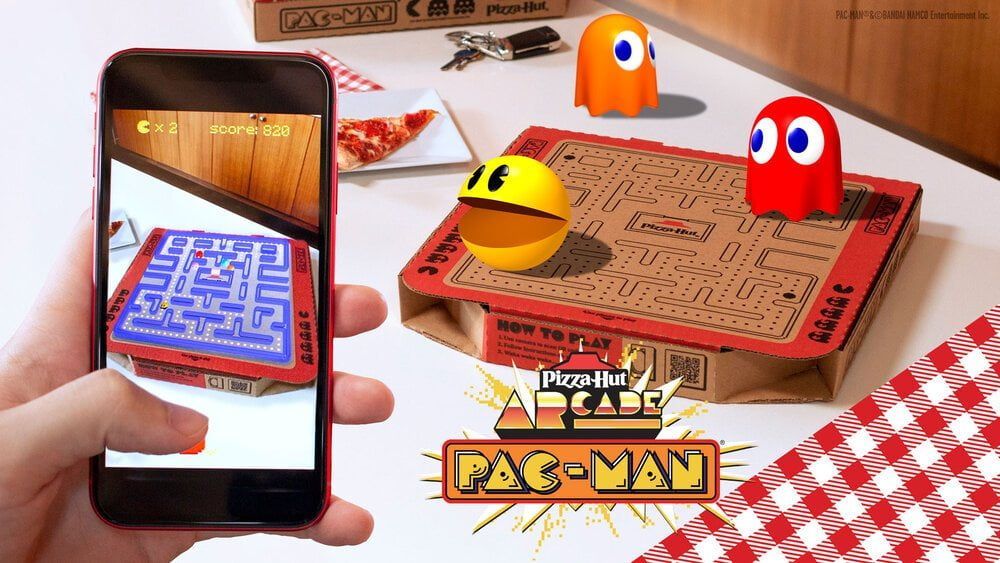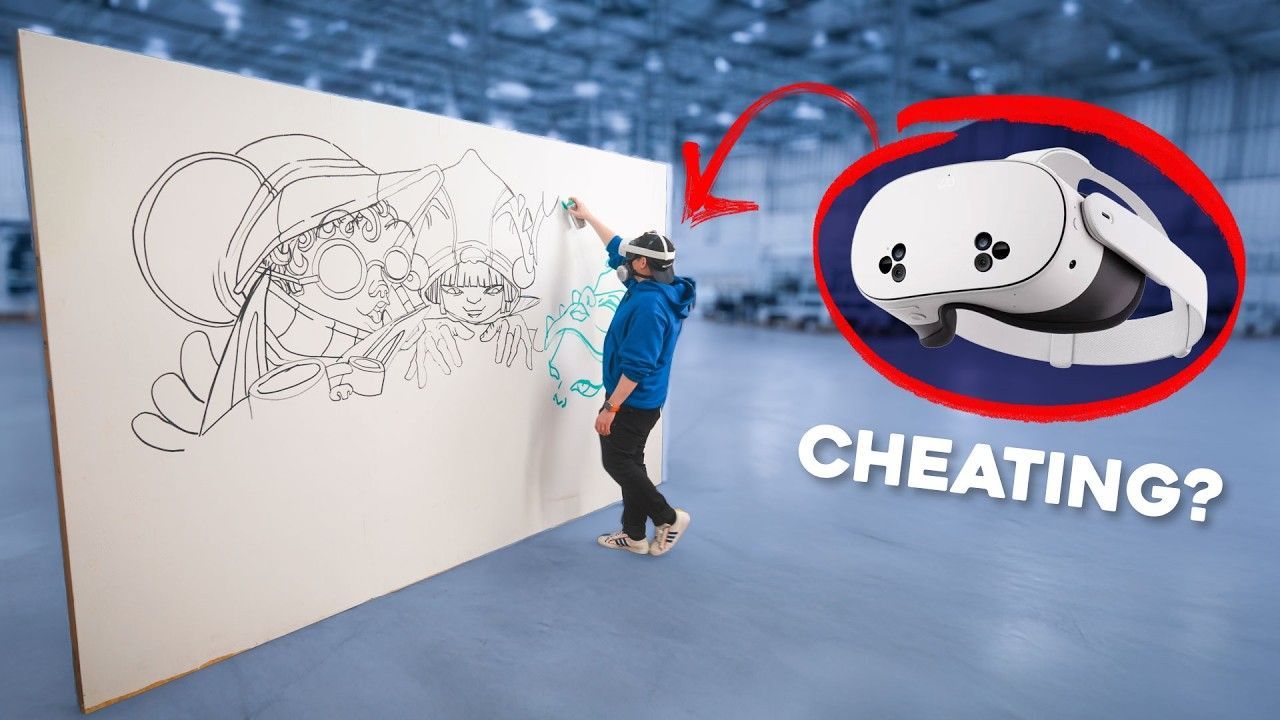WebAR vs. AR Apps: Which Is Better?
1. Understanding Augmented Reality
Augmented Reality (AR) is a technology that superimposes digital content—such as images, videos, 3D objects, and animations—onto a user’s real-world environment. This blend of digital and physical elements creates interactive experiences that can enhance learning, entertainment, communication, and more. AR often leverages smartphone cameras, sensors, and advanced computer vision techniques to detect and map the physical environment, enabling virtual objects to appear anchored to real-world surfaces.
Over the last decade, AR has seen tremendous growth, with the global AR market expected to continue expanding as more industries adopt immersive solutions to engage customers and streamline workflows. Today, AR solutions can be broadly classified into two categories: WebAR and AR apps. Understanding the differences between these two approaches is crucial for businesses, developers, and marketers looking to invest in AR technologies.
2. An Overview of WebAR
WebAR (short for web-based augmented reality) allows users to experience AR content directly from a web browser without installing a standalone application. This is typically achieved by leveraging HTML5, JavaScript, WebGL, and WebXR APIs, among other web technologies. When a user visits a webpage that supports AR features, the site accesses the device’s camera and overlays virtual elements onto the user’s environment through various tracking and rendering techniques.
Benefits of WebAR
- Instant Access
One of the biggest advantages of WebAR is its instant accessibility. Users don’t need to download an app; they can simply tap a link or scan a QR code to access the AR content in their phone’s browser. - Frictionless User Experience
Because there’s no need to navigate an app store, wait for downloads, and manage storage space, the barrier to entry is significantly lower. This frictionless approach can drive higher engagement and conversion rates. - Cross-Platform Compatibility
WebAR experiences can run on various devices, including smartphones, tablets, and even desktop computers (as long as they have a compatible camera and browser). This broad compatibility makes WebAR a powerful option for campaigns targeting diverse user bases. - Easy Updates
Updating a WebAR experience is as simple as updating the web content on your server. You don’t need to push new versions to app stores or wait for user downloads.
Drawbacks of WebAR
- Limited Performance
Because WebAR runs inside a browser, performance can be somewhat restricted compared to native AR apps. Complex scenes, high-fidelity graphics, or advanced tracking features may pose challenges. - Device and Browser Constraints
WebAR relies on support for WebXR or similar AR-related APIs. Not all mobile browsers support these technologies fully, which can lead to inconsistent user experiences across different devices. - Fewer Advanced Features
While WebAR has made significant progress, it still lags behind some native app features, such as advanced SLAM (Simultaneous Localization and Mapping), robust face tracking, and deep integration with other device functionalities.
3. An Overview of AR Apps
AR apps are standalone applications built specifically for AR experiences. They typically leverage mobile platforms like iOS (ARKit) and Android (ARCore). Users must download and install these apps from app stores before enjoying the AR content. Because these apps integrate directly with the device hardware and use native APIs, they can often offer more advanced and robust functionalities.
Benefits of AR Apps
- Superior Performance
AR apps can leverage a device's full processing power, graphics APIs, and hardware acceleration, resulting in smoother animations, higher-fidelity graphics, and more accurate tracking. - Advanced Capabilities
Because they integrate natively, AR apps can access deeper features like advanced face tracking, 3D object detection, and multi-plane tracking, as well as integrate with other device capabilities such as GPS, accelerometers, or AR cloud services. - Branding and User Loyalty
A standalone app can reinforce brand identity and encourage repeat usage. Businesses can foster greater user loyalty by offering robust features and personalization options.
Drawbacks of AR Apps
- Friction in User Adoption
One of the biggest barriers to AR apps is requiring a download. Users may not be willing to install an additional app, especially for one-time or infrequent use. This friction can lead to lower adoption rates. - Higher Development Costs
Developing a high-quality AR app typically requires a more substantial investment of time, money, and expertise. Additionally, maintaining separate versions for iOS and Android can be resource-intensive. - Complex Update Process
Every time you need to introduce new features or fix bugs, you’ll have to release an app update. Users must also download these updates, which can slow adoption of new functionalities.
4. Key Differences Between WebAR and AR Apps
While both WebAR and AR apps serve the core function of delivering AR content, they differ fundamentally in several aspects:
4.1 Accessibility and Reach
- WebAR: Instantly accessible through a browser. Users can easily click a link or scan a QR code.
- AR Apps: Requires a full download from an app store, installation, and enough device storage.
- Winner: WebAR wins for accessibility, as it reduces friction and broadens reach.
4.2 Performance and User Experience
- WebAR: Browser-based performance can be sufficient for simple to moderately complex experiences but might struggle with advanced graphics or tracking.
- AR Apps: Typically offers smoother performance and more advanced capabilities due to direct access to device hardware and native APIs.
- Winner: AR Apps typically provide superior performance, particularly for resource-intensive experiences.
4.3 Development Complexity
- WebAR: Developers can use standard web technologies (HTML5, JavaScript, CSS, WebGL, WebXR). While frameworks and libraries exist, achieving advanced features can be more challenging.
- AR Apps: Development typically involves native SDKs (ARKit for iOS, ARCore for Android) or game engines like Unity and Unreal Engine, which can handle more complex tasks but require specialized skills.
- Winner: WebAR might be simpler if you’re already experienced in web development, but AR Apps could be easier to implement for advanced AR features (with the tradeoff of higher complexity in app management).
4.4 Cost and Time to Market
- WebAR: Often cheaper and faster to launch because it avoids the app store submission process and draws on widely available web development resources.
- AR Apps: Higher cost, especially for complex projects. Submission to app stores adds extra steps, and advanced features may require specialized AR developers.
- Winner: WebAR generally offers a lower barrier to entry in terms of cost and time.
4.5 Updates and Maintenance
- WebAR: Updates are immediate and don’t require user downloads; once the webpage is refreshed, the new experience is live.
- AR Apps: Updates go through the app store review process, and users must download the latest version.
- Winner: WebAR is more convenient for rapid updates.
4.6 Platform and Hardware Support
- WebAR: Heavily reliant on browser support and device compatibility with WebXR or similar APIs.
- AR Apps: Built natively for iOS or Android, leveraging powerful SDKs like ARKit and ARCore with robust device support.
- Winner: AR Apps have broader capabilities on supported devices, but WebAR can be more universal if the user’s browser supports it.
5. Use Cases for WebAR and AR Apps
Both WebAR and AR apps shine in different scenarios, depending on the project requirements, the target audience, and the desired user experience.
Best Use Cases for WebAR
- Marketing Campaigns and Promotions
WebAR’s frictionless experience makes it perfect for short-term promotions or viral marketing campaigns. Users can scan a QR code from a product package or billboard and instantly engage with immersive AR content. - E-commerce and Product Visualization
Online retailers can embed WebAR experiences into their product pages, allowing customers to virtually try on items or preview furniture in their homes without installing an app. - Event and Conference Engagement
Organizers can incorporate WebAR experiences into event materials like tickets, brochures, or name tags, enhancing the attendee experience without requiring app downloads. - Educational Demos
Museums, educational institutions, and publishers can quickly deploy interactive AR demonstrations through a webpage, broadening access to immersive learning.
Best Use Cases for AR Apps
- Gaming and Entertainment
Advanced AR games require precise spatial tracking and high-fidelity graphics, making native apps better for performance-critical experiences. - Professional and Industrial Applications
In manufacturing, healthcare, or architecture, advanced AR features such as multi-plane tracking, 3D object scanning, and real-time collaboration tools often require the robust capabilities of native AR apps. - Long-Term User Engagement
If you’re building an AR app that encourages repeated use and deeper engagement—like a social platform or productivity tool—a native app is often the best approach. - Brand Loyalty Apps
Companies aiming to create a branded ecosystem with multiple AR features—such as loyalty programs, frequent updates, and personalized content—can leverage native apps for richer, more integrated experiences.
6. Which Is Better? Deciding Factors
Choosing between WebAR and AR apps depends on your specific objectives, budget, audience, and the complexity of the AR experience you plan to offer. Here are a few key deciding factors:
User Engagement vs. Instant Access
- If your priority is immediate reach and frictionless user experience, WebAR may be a better fit. This is especially true for temporary campaigns, marketing promotions, or one-time user interactions.
- If you need to build long-term user engagement with robust features, push notifications, and advanced functionalities, consider an AR app.
Complexity and Depth of Features
- WebAR can handle simple or moderate AR experiences (such as 3D model placement, basic face filters, or product visualization).
- Advanced AR capabilities (like multi-plane tracking, occlusion, facial expression tracking, or sophisticated 3D animations) may demand an AR app.
Budget and Development Timeline
- Tight budgets or limited development resources often favor WebAR, as it reduces the overhead of native development and app store submissions.
- Larger budgets or strategic focus on AR for a key product or service can justify the investment in a native AR app.
Frequency of Updates
- If you anticipate frequent changes, iterative improvements, or event-specific campaigns, WebAR offers quick, pain-free updates.
- For stable, long-term projects with planned release cycles, an app may still be worth the extra effort.
Target Audience
- If your user base is broad and global, WebAR’s cross-platform compatibility may offer a wider net. However, check if your target demographics have devices and browsers that support WebAR.
- If your user base includes tech-savvy consumers or specialized professionals who appreciate advanced features, an AR app could provide the depth of experience they expect.
7. Future Trends in WebAR and AR Apps
The AR ecosystem is constantly evolving, and emerging trends may reshape the advantages of WebAR and AR apps in the coming years:
- Improved Browser Capabilities
As browsers become more powerful and standards like WebXR mature, WebAR experiences will likely approach the performance and feature richness of native AR apps. - 5G and Edge Computing
Faster internet speeds and low-latency connections promise to improve real-time rendering and cloud-based AR solutions. This will benefit both WebAR and AR apps, but due to better streaming capabilities, WebAR may see a bigger leap in performance. - Hardware Advancements
Enhanced camera modules, LiDAR sensors, and wearable AR devices (like AR glasses) will expand the possibilities for AR experiences. Native apps may initially harness these features more effectively, but WebAR is expected to follow as standards evolve. - Artificial Intelligence Integration
Machine learning models running on-device or in the cloud could enable real-time object recognition, gesture tracking, and environment understanding. While AR apps already leverage AI features, WebAR will eventually adopt them as browser-based AI frameworks improve. - Cross-Platform AR Frameworks
Tools like Unity, Unreal Engine, and Babylon.js are increasingly offering cross-platform solutions that blend the best of web and native technologies. This could blur the lines between WebAR and native AR apps, making the decision less about platform and more about user experience goals.
8. Conclusion
The choice between WebAR and AR apps often depends on your specific use case, target audience, budget, and development timeline. If your primary goal is to reach the widest possible audience with minimal barriers to entry or if you’re focusing on short-term campaigns, WebAR might be the ideal choice. It offers instant accessibility, cross-platform compatibility, and rapid updates, making it particularly effective for marketing, event engagement, and e-commerce.
On the other hand, if you need advanced AR capabilities, higher performance, and a feature-rich environment that can support repeated user interactions, investing in a native AR app could be more beneficial. AR apps can tap into the device’s hardware, enabling smoother performance, more accurate tracking, and deeper functionality like 3D object detection, advanced face tracking, and dynamic cloud-based AR experiences.
Ultimately, the question of “WebAR vs. AR Apps: Which Is Better?” has no one-size-fits-all answer. Both solutions offer unique strengths, and the best approach often involves evaluating factors like user experience, performance requirements, development resources, and long-term goals. For certain organizations, a hybrid approach—leveraging WebAR for quick demos or marketing campaigns while providing a more robust native app for deeper engagement—may be the best strategy.
As AR technology matures, the gap between WebAR and AR apps will likely narrow, giving developers and businesses more flexibility to deliver innovative, immersive experiences regardless of the platform. Whether you choose WebAR, AR apps, or both, augmented reality remains a powerful tool to captivate audiences, drive engagement, and bring your brand vision to life in ways previously unimaginable.
TALK TO A PRO
We're here to bring your brand to life!
Stay Connected with BrandXR
Create Augmented Reality for Free!
Create, Publish, and Measure 3D Augmented Reality Experiences Without Having to Code.
